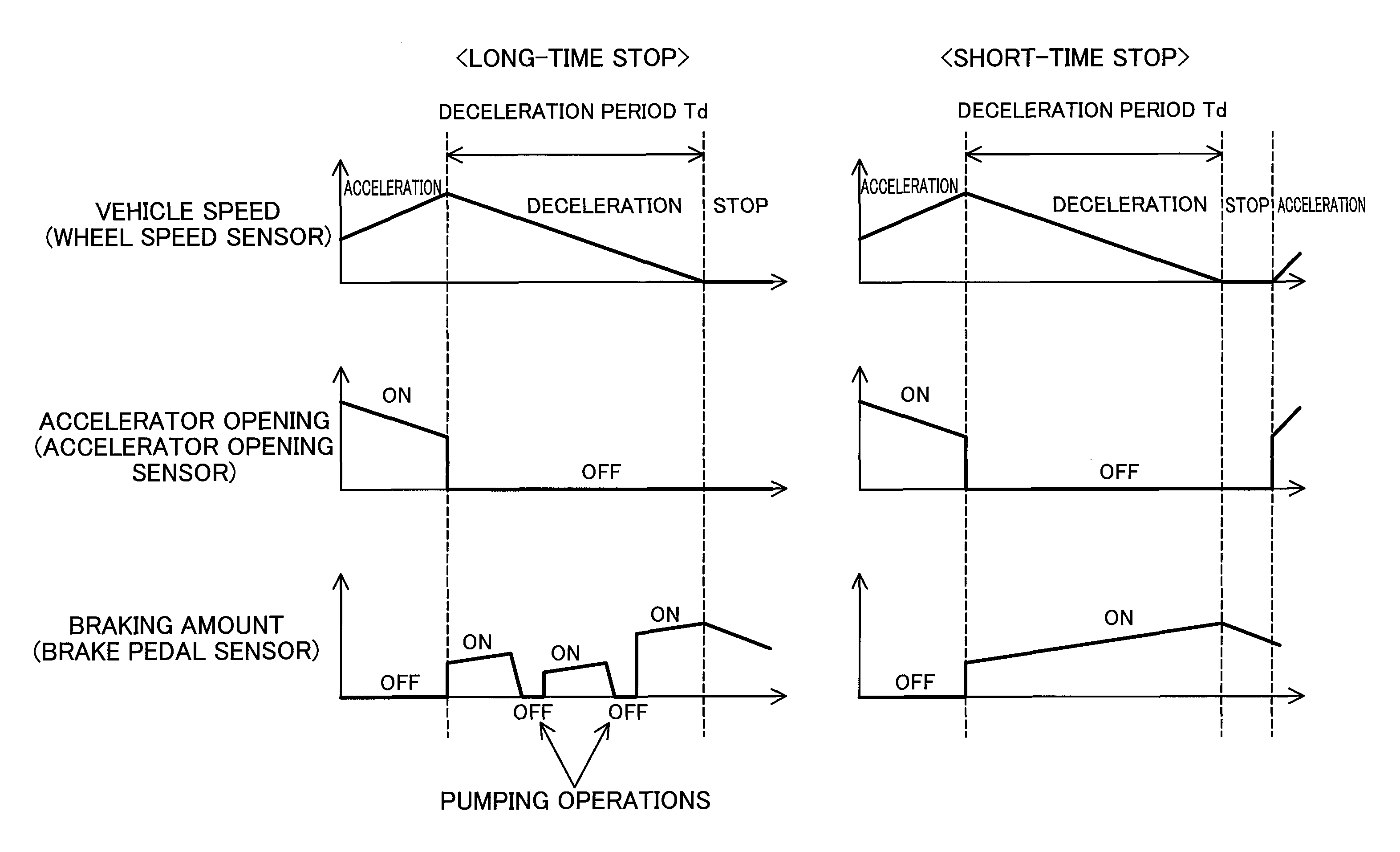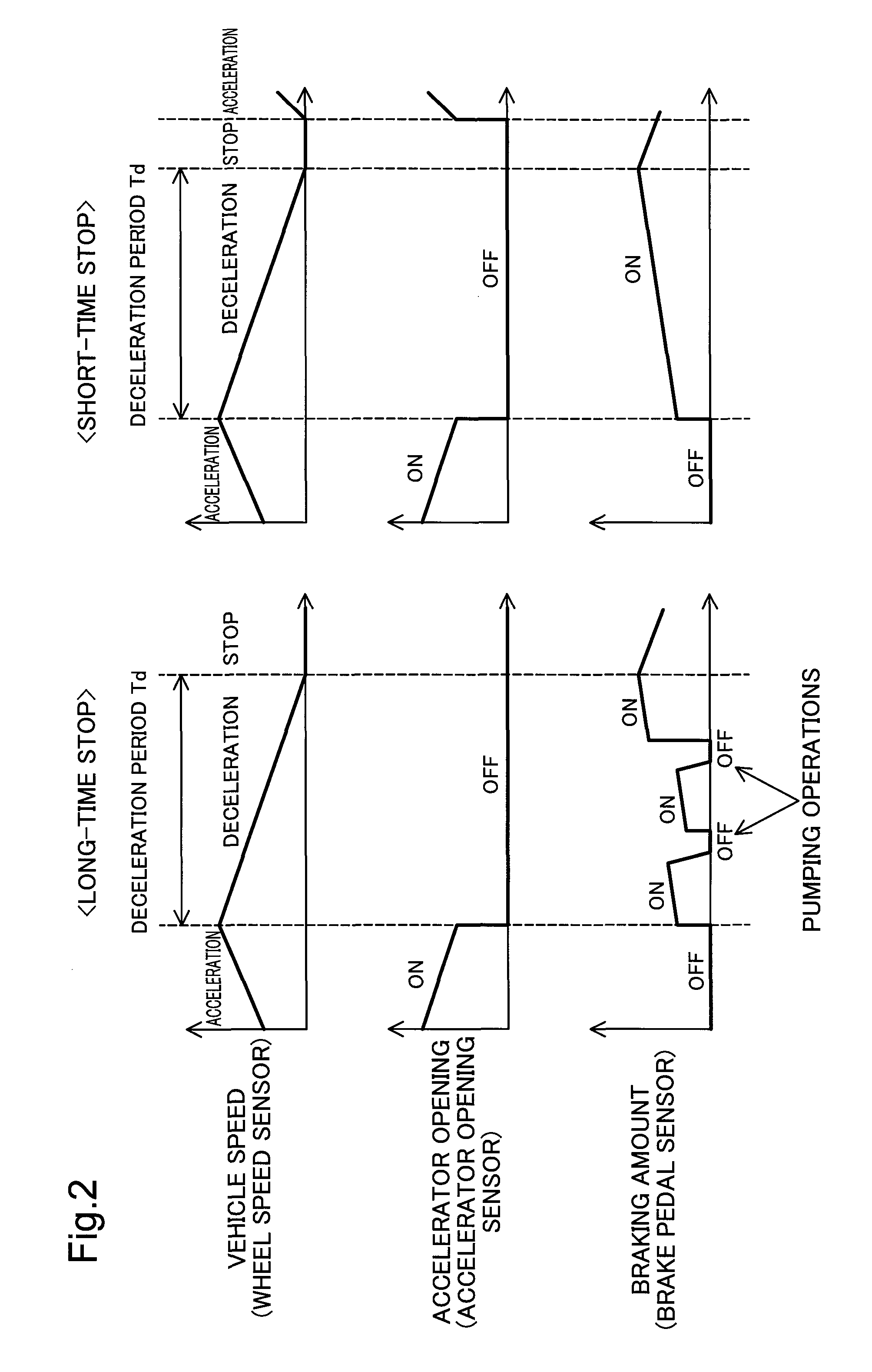Idling stop control device, vehicle and vehicle control method
a technology of idling stop and control device, which is applied in the direction of engine starters, machines/engines, transportation and packaging, etc., can solve the problems of frequent stop and restart of engines, and achieve the effect of improving the fuel consumption of the vehicl
- Summary
- Abstract
- Description
- Claims
- Application Information
AI Technical Summary
Benefits of technology
Problems solved by technology
Method used
Image
Examples
first embodiment
A. First Embodiment
[0041]FIG. 1 is a diagram illustrating the configuration of an automobile 10 according to an embodiment of the invention. The automobile 10 is a vehicle having idle reduction function. The automobile 10 includes an engine 100, an automatic transmission 150, a differential gear 200, drive wheels 250, a starter 300, an alternator 350, a battery 400 and an electronic control unit (ECU) 500.
[0042]The engine 100 is an internal combustion engine that generates power by combustion of a fuel such as gasoline or light oil. The power of the engine 100 is transmitted to the automatic transmission 150, while being transmitted to the alternator 350 via a drive mechanism 340. The output of the engine 100 is changed according to the driver's accelerator pedal operation by the electronic control unit 500.
[0043]The automatic transmission 150 automatically changes the gear ratio (so-called gear shifting). The power (rotation speed·torque) of the engine 100 is subjected to gear shif...
second embodiment
B. Second Embodiment
[0068]A second embodiment describes a configuration of the idle reduction control (FIGS. 3 and 4) that varies the waiting time Tw according to the count value Nc. The general configuration of the automobile 10 is the same as that of the first embodiment and is thus not specifically described here. The idle reduction ECU 510 of the second embodiment stores an Nc-Tw relation table representing a relationship between the count value Nc and the waiting time Tw in the ROM.
[0069]FIG. 5 is a diagram illustrating the details of the Nc-Tw relation table. The abscissa of FIG. 5 shows the count value Nc, and the ordinate shows the waiting time Tw. As shown in FIG. 5, the Nc-Tw relation table is arranged such that the waiting time Tw decreases with an increase in count value Nc. For example, the Nc-Tw relation table is arranged, such that the waiting time Tw is 5 [s] at the count value Nc of 0 and is 1 [s] at the count value Nc of 5. In idle reduction control of the second e...
modification 1
C-1. Modification 1
[0072]According to the above embodiments, the idle reduction ECU 510 determines whether the automobile 10 stops at step S106 in idle reduction control (FIG. 3). Alternatively, the idle reduction control may determine whether the speed of the automobile 10 is reduced to or below a predetermined speed (>0). In other words, the idle reduction ECU 510 may stop the engine 100 in the state that the automobile 10 does not stop. In this modification, at step S108, the idle reduction ECU 510 may define the waiting time Tw as a time elapsed since the speed of the automobile 10 goes down to the predetermined speed or may define as a time elapsed since a stop of the automobile 10.
PUM
 Login to View More
Login to View More Abstract
Description
Claims
Application Information
 Login to View More
Login to View More - R&D
- Intellectual Property
- Life Sciences
- Materials
- Tech Scout
- Unparalleled Data Quality
- Higher Quality Content
- 60% Fewer Hallucinations
Browse by: Latest US Patents, China's latest patents, Technical Efficacy Thesaurus, Application Domain, Technology Topic, Popular Technical Reports.
© 2025 PatSnap. All rights reserved.Legal|Privacy policy|Modern Slavery Act Transparency Statement|Sitemap|About US| Contact US: help@patsnap.com



